

COLUMBIA UNIVERSITY FOOTBALL, URBAN WASTELAND
HELMET HUT NEWS/REFLECTIONS November 2014:
COLUMBIA UNIVERSITY FOOTBALL, URBAN WASTELAND
By Dr. Ken
Some will read the title of this
month’s column and think it
harsh or judgmental so my first
comment will be that I both like
and respect Columbia University,
in New York City’s borough of
Manhattan. It is one of the
finest academic institutions in
the nation with specific courses
of study that surpass the more
nationally revered Harvard or
Yale. The Columbia and Barnard
College faculties are among the
best in their specialties and
the architecture of the campus,
both old and new make the school
extraordinarily attractive
despite its big city setting. I
attended the October 4th
game at the Robert K. Kraft
Field at Lawrence A. Wien
Stadium. Seating 17,000
spectators, it is compact,
modern, and beautiful. Even in
the pouring rain, watching one
of the young men that has been a
long time trainee of mine play
nose guard for the Princeton
Tigers was a pleasure in the
facility. As usual, their
Columbia, or light blue uniforms
have remained among the most
attractive in the nation.
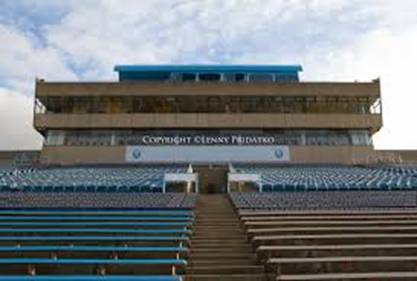 |
I touched upon Columbia’s
positive aspects in the
HELMET HUT
Helmet News/Reflections article
I wrote in August of 2007 [http://www.helmethut.com/Features/Dr.Ken46.html
].
As a teenaged ironworker and
into my twenties, I often
accompanied my father to the
campus to measure and install
numerous iron work related
projects as he had “an in” that
allowed us to do everything from
fabricating and installing the
window guards on the university
president’s home, to the iconic
oversized wrought iron gates
that surround the perimeter of
the campus, to the structural
steel skeleton of the Butler
Library. I was always
comfortable on the Columbia
campus and fully understood how
difficult it was to attain
admission due to the stringent,
Ivy League academic
requirements. Our office has and
continues to work with numerous
high school and collegiate
athletes. My wife and I are
often consulted by the athletes,
their families, and their
coaches when it is time to make
college related decisions and we
take that privilege of advising
and adding our opinion very
seriously. In all cases, even
when dealing with athletes who
have the potential to develop
into world class or professional
athletes, our advice has always
been to “get the best
education.” We have had
athletes with full scholarship
offers to Division 1 schools
like Penn State, Syracuse,
Boston College, and Purdue, all
fine academic institutions, pass
on these for an opportunity to
obtain grant money and attain a
degree from Princeton, Harvard,
Columbia, and Yale. In every
case, the value of an Ivy League
degree outweighed the thrill and
excitement of playing football
on the larger collegiate stages.
Columbia’s upset of Army in 1947
was one of the biggest of the
century
Columbia football of course, has
not maintained the high
standards they had decades ago,
many decades ago. Let’s allow
reality to set in; one has to go
back so many years to claim
Columbia greatness, it seems
like an exercise in ancient
history but greatness did in
fact permeate the football
program. Yes, it was the leather
helmet days when Lou Little
became the head coach in 1930, a
University Of Pennsylvania
product who had previously
coached at Georgetown. Little
proved to be a master
psychologist, taking a sport
that was no more than an
accompaniment to any other form
of fall entertainment in
Manhattan, to one of a very
special experience. After his
first outing that resulted in a
5-4 mark, he posted a 29-4-2
record in the following four
seasons and his upset of
Stanford in the 1934 Rose Bowl
(yes, Columbia in the Rose
Bowl!) ranked as one of the
greatest feats in collegiate
football history. Despite
falling to mediocrity, there
were high points, with
quarterback Sid Luckman’s play
that resulted in a 1938 upset of
Army and garnered the attention
of the Chicago Bears George
Halas. Luckman would of course
go on to become the first of the
true NFL T-Formation
quarterbacks, forever changing
the game of football. In ’47,
with Little still at the helm,
another upset of Army, one that
broke a thirty-two game Black
Knight unbeaten streak, became
known as “The Little Miracle Of
Baker Field.” There was no doubt
that in his twenty-nine years as
head coach, Little had served
Columbia loyally and well with a
reputation as a fine coach and
exceptional man but his record
finished at a modest 110-116-10
and he had but eleven winning
seasons. Yet, the rest of the
faculty proclaimed him as a
great teacher and Dean Herbert
Hawkes referred to him as
Columbia’s best teacher. He was
totally dedicated to insuring
that his players attained
degrees and the academic
achievement of his teams was
always among the best on campus.
They lost to Princeton early in
the season but defeated highly
favored Yale to finish in a tie
with Harvard at 6-1, which
earned their share of the
championship. This has proven to
be the Lions’ high water mark,
despite the later presence of
three-time All Ivy quarterback
Archie Roberts, who was drafted
by the Jets in 1965, signed with
the Browns and appeared only in
the pre-season games, attending
medical school the remainder of
the year, until finally
appearing in one game with the
Dolphins in ’67. Roberts was a
multi-sport athlete, excelling
in baseball also, and was a full
time two-way gridiron performer,
rotating to defensive back after
each offensive series and
eventually became one of the
nation’s best known heart
surgeons. The 1961 shared
championship has proven to be
the Lions’ high water mark,
despite the later presence of
Marty Domres, a 1968 Honorable
Mention All American
quarterback, whose best team
finished at 2-7. He set numerous
single season and career passing
records for the Lions and was a
number one draft choice of the
San Diego Chargers, best known
for replacing the legendary
Johnny Unitas after being traded
to the Baltimore Colts. Like
most Columbia graduates, he has
been successful in his post-NFL
career as a financial consultant
to Deutsche Bank. The list of
course goes on for Columbia
football players, less for
football immortality than for
business and professional
success.
The helmet worn by the 1961
Columbia squad, complete with
painted center stripe
The group that represented the
1961 Lions however, remains a
cut above, with many remaining
in the New York Metropolitan
area, serving as leaders in
business and industry. Halfback
Russ Warren continued his
football career by playing three
seasons in the Atlantic Coast
Football League while pursuing
his medical studies and became
one of the most highly respected
orthopedic surgeons in the
nation, eventually overseeing
the medical staff of the New
York Giants where he remains to
this day. Tom Haggerty too,
another of one of the Lions best
all-time backfields, pursued a
few additional football seasons
with Providence in the ACFL
before rising to tremendous
success in business. Al Butts
spent decades as an innovator in
the hotel management field.
Captain Billy Campbell continued
to set the pace for the class
and team he led. Named to the
All Ivy League team, with
Warren, Haggerty, Asack, Black,
and Tony Day, Campbell took his
degree in economics, enhanced it
with a Master’s Degree in
Education from Columbia’s
Teachers College, and became a
football coach, serving as an
assistant at Boston College for
six seasons. Hoping to revive
the Lions fortunes, Campbell was
named head coach of Columbia in
1974 but resigned after the ’79
season.
All Ivy League linemen Captain
Bill Campbell, Lee Black, and
Bob Asack
He entered the business world
and rose through the ranks
before becoming a Vice President
at Apple. An icon in the
computer related businesses,
Campbell has been CEO and/or
Chairman of GO Corporation,
Claris, Intuit, and Apple and
was one of Steve Jobs most
trusted advisors. He has spent
many years giving back to
Homestead, Pennsylvania, his
home town where he starred as a
two-way football player who left
to pursue an education in “the
big city.” He has also given
back a great deal to his
college alma mater. He and
Robert Kraft have been
responsible for providing
Columbia with one of the best
equipped and most beautiful
athletic facilities for a
university of its size. He was
named Chairman of Columbia’s
Board Of Trustees in 2005 and
put his heart into reviving the
fortunes of the athletic
programs and continuing the
university’s outstanding
academic reputation.
In 1966, the wide, painted
Columbia blue stripe remained
and the navy blue lion was added
to both sides of the white shell
The talent that remained after
that marvelous ’61 season
carried the squad to a 5-4 and
4-4-1 record but following the
1963 season, Columbia slid
backwards to what had become
their more typical performances,
reeling off five consecutive
two-win seasons. Of course, one
cannot discuss Columbia football
without making mention of what
was at the time, college
football’s longest losing
streak. Between 1983 and into
the ’88 season, the Lions
dropped forty-four consecutive
contests, surpassing
Northwestern’s thirty-four game
skid. It took Prairie View A&M’s
eighty game streak on the losing
side of the ledger to best the
Lions. Other than the 8-2 1996
season, the last half of the
1990’s left the Lions as the
perennial doormats of the Ivy
League, and three winning
seasons in the past fifty years
will put an exclamation point on
the statement.
Forget
the laudatory comments from
ESPN’s Chris Berman about “the
powder blue uniforms” of the
Chargers, the Columbia blues
always look great
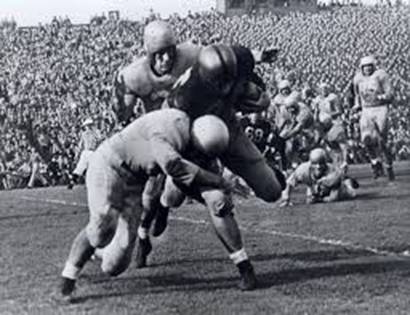
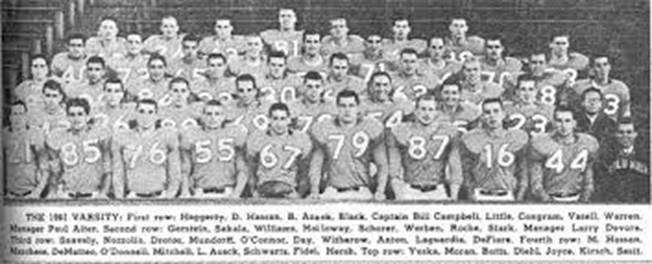
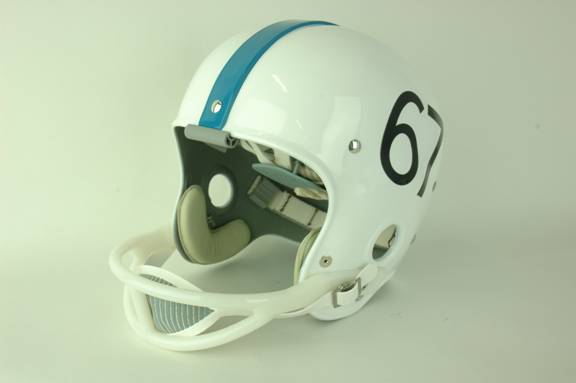
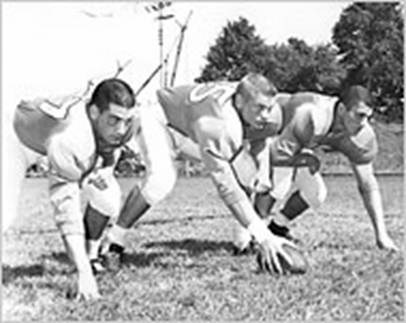
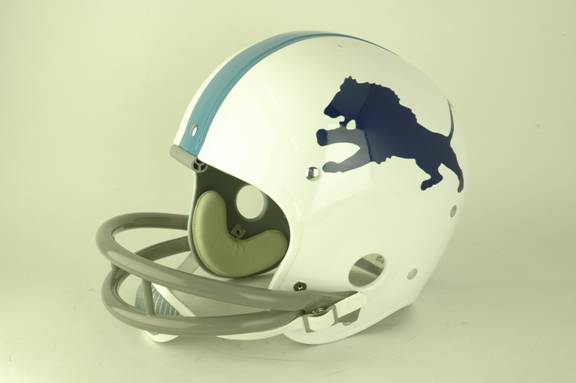
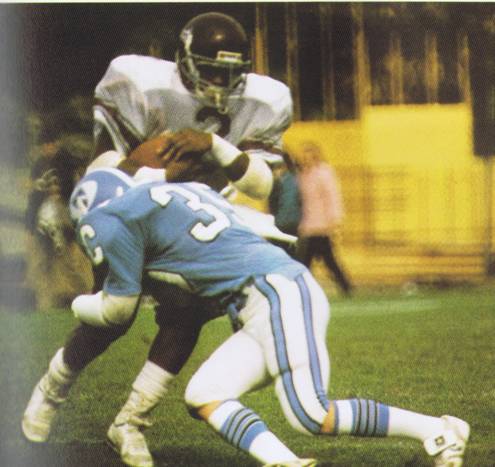
Yet, the team comes to play, as
it did this past Saturday as I
sat in a literal downpour
watching yet another futile
effort against Princeton. If
nothing else, the Lions of
Columbia continue the tradition
of attractive uniforms, with the
light, Columbia blue jerseys
augmenting a white and Columbia
blue helmet. Most fans are
hoping that at some point in the
near future, the team’s success
can match the high standards of
the facilities they train and
play in, and those very nice
uniforms.